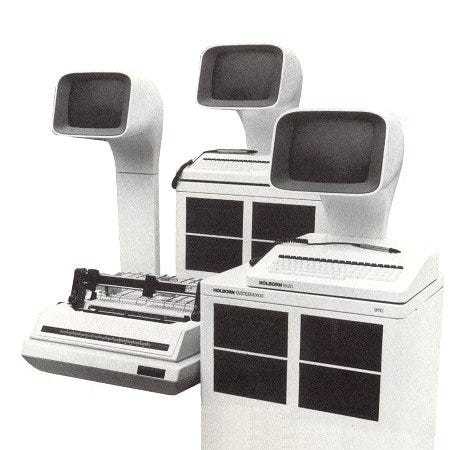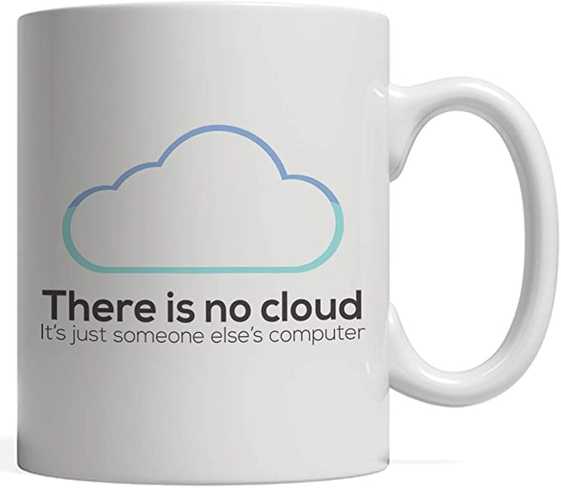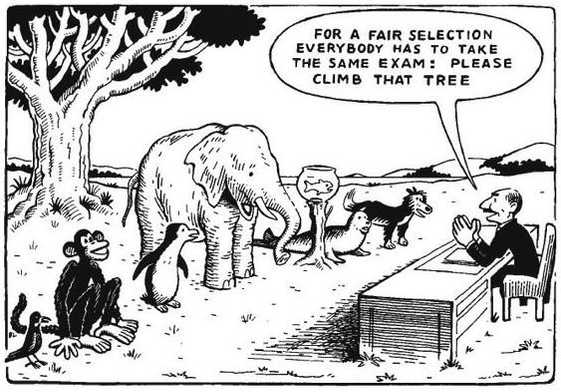Hardware Strategy
Introductory remarks
Writing these works now, i find it interesting that my journey from the early 90s started with building, fixing and selling computers; leading to my first work on an 'invention' where i sought to make computers that worked on tvs.
Indeed also, there's an old email from me to former Microsoft 'luminary' Frank Arrigo that he published at the time 2005LotsOfIdeas-SomeBig&SomeSmall. So many years later, some of the problems illustrated as ideas are now commonplace, others remain to be a problem, and others still not yet created... ie: The Computer expansion port for displays...
Interesting also - i only recently heard about the Holborn Computer:
Between 1980 and 1983, a little company in The Netherlands built the “Holborn” series of computers… which can best be described as “1950s sci-fi… powered by a Z80”. Source: The Lunduke Journal of Technology - Remembering the (very) funky Holborn computers of the early 1980s
Now, as i end-up going back to the process of designing a hardware stack; it just leads me to be reminded about how very long this journey has actually been...
Back in June 2004, i helped to create an incubator for financially disadvantaged kids (in complex circumstances) and when discussing the problems and concerns that i had about where an earlier attempt called Basedrive had gone, i said that it had become a "It was a Bill Gates take-over-the-world platform," source: The Age Start Me Up 19th June 2004
Now, so many years on - The microsoft platform and international cloud (azure) is critical to an international 'identity' fabric, OpenAI, Github and so much more. There is presently no way for advanced AI capabilities to be performed on local systems that are owned by their operators. In a recent article by Tech Crunch There’s now an open source alternative to ChatGPT, but good luck running it, it states; "to train the open source model Bloom, which has 176 billion parameters, it took three months using 384 Nvidia A100 GPUs" and to run it Bloom requires a dedicated PC with around eight A100 GPUs...
More advanced models, such as PaLM is 540 billion parameters in size...
noting also: Nvidia Using DeepSpeed and Megatron to Train Megatron-Turing NLG 530B, the World’s Largest and Most Powerful Generative Language Model and in-turn also that the next generation of OpenAi (Microsoft Azure Cloud powered) was noted by an article on Wired Magazine stated: “From talking to OpenAI, GPT-4 will be about 100 trillion parameters,.
Effectively; what we're starting to see in the public domain, are examples that can be illustrated that shows capabilities of these vast modern forms of 'mainframes', that have a capacities that are not able to be done locally or via a (private / permissioned) community computing approach, to produce and support HumanCentricAIEthics, PermissiveCommons and in-turn also SafetyProtocols. Importantly also; is the need to consider the requirements for WebOfThings(IoT).
[*The End of Cloud Computing by Peter Levine, Andreessen Horowitz*](https://a16z.com/2019/11/15/the-end-of-cloud-computing-2/)Whilst there are some people who talk about 'human like artificial intelligence', that concept, in my opinion, is somewhat misleading; as human beings, could never naturally perform tasks like SkyNet or the Borg - Star Trek. No human being has the ability to provide as many records about a particular search query, as is done every day by people via tools like google.
Ai capabilities, are an evolutionary advancement far beyond what has been previously known.
Webizen introduces an opportunity to forge a HumanCentricAIEthics narrative, that's based upon a different sort of paradigm than what has existed earlier. Yet, the realisation of good; is not at all secure; whether or not this is able to be achieved, is going to require alot of help, minds and persons who want to support the growth of it, to a point where it is able to be delivered.
In-Effect; What the Webizen Pro Hardware (and software) strategy is all about; is the ability to Democratise AI Power, whilst producing a computing ecosystem designed to support objectives such as those defined as TheValuesProject and the PeaceInfrastructureProject. In-effect, it is about producing alternative types of ArtificialMinds that are designed to support the personal needs of human beings who own them. To achieve this outcome, we also need to consider how various types of organisations can employ AI independently, to support their own needs.
Webizen Hardware Solutions
To summarise these points, the WebizenTechStack is intended to provide an alternative to these massive, global 'clouds' - whereby Webizen and Webizen Pro users are able to work both privately (confidentially / securely) and cooperatively, to produce 'open-source' alternatives to these major global platforms that our societies may otherwise depend upon in ways that do not support a means to realistically support the Centricity related SafetyProtocols requirements that are structured into the foundational nature of how Webizen has been designed to work.
The Webizen Hardware solution is a vital part of the Webizen CommercialModels that are in-turn seeking to deliver the foundational requirements for the PeaceInfrastructureProject, whilst acting to produce a new class of computing. There has been a history of battles betweeen 'mainframe' ideologies and systems vs. 'personal computing', or as Steve Jobs put it - interpersonal computing (see timeline...
Once the 'hello world' Webizen3.0 is developed to a point where the Webizen3.0SetupUserExperience, related user-experience and in-turn also the WebizenAlliance support infrastructure is ready for broad-ranging public use; the Webizen3.5 introduces a hardware strategy that is centred upon the use of hardware enabled Advanced AICapabilities via WebizenAiOS-Platform whilst extending (or refactoring) the works produced as part of the Webizen3.0 projects.
Webizen Pro Series Hardware
The end name of it may be something else - i've just defined it as webizen pro for now, so that i've got something to call it.
The Webizen Pro ecosystem - is intended to both, provide a solution in the absence of any others and in-turn overtime, provide a reference platform that can support developers needs when they're seeking to produce innovative capabilities with a hardware-target that they've produced their software to operate on. It is the intention to produce the WebizenProSeries devices. These hardware builds will be the primary target for optimisation of the WebizenAiOS-Platform capabilities; and, sought to be rendered support via the WebizenProVARSolutions - WebizenAlliance membership network.
The design of the WebizenProSeries hardware is intended to support advanced cryptography, the use of vPRO extensions; and the use of neuromorphic processors alongside cuda and tensor cores to support AICapabilities in a way, existing devices can't do.
A more details outline of the hardware components is provided in the WebizenProHardware document, although - this is still all early stage and subject to change without notice, etc.
These systems are intended to provide a new class of computing; acting as an alternative to 'the cloud' (whilst not entirely decoupled from it). The form factors targets include a silent or near silent tower unit alongside rack-mountable versions (either DC or AC powered).
Yet, the broader WebizenAiOS-Platform is to be designed so that it is able to work on other hardware. There are various examples of how, where and why this is important, and i'll provide an illustration of some of those examples below.
Webizen Pro Compatible 3rd party solutions
There's an array of options and i've only made note of a few of those options below. It may well be the case that Webizen will sell parts required for WebizenAlliance members to provide end-users who are looking to build their own systems, and there will be other situations where 3rd party systems are used for various reasons. Whilst the support arrangements will be impacted, this doesn't preclude people from being entitled to assemble their own solutions, and it is hoped that in many future cases, this is something that is found to be supportive for us all.
DIY - HomeBrew Webizen Builds
People who sign-up to the webizen alliance as a software developer, or even simply webizen network users - may well want to build or buy their own hardware to deploy webizen on.
If this desire is not supported, many of these people are more likely to hack the stack to make it work on their own devices anyway. They're unlikely to want to pay a premium for computer hardware they can build (and maintain) themselves, so they'll want to make their own.
These activities may well lead to innovation related outcomes that will benefit the ecosystem.
Consumer Hardware
The Mac Mini makes use of the M1 chip, which features functionality that may be usefully employed in the webizen ecosystem; furthermore, the devices can be purchased with a starting price of around $1100 AUD, whilst a fully upgraded (16GB ram, 2TB HDD,1GbE ethernet) the cost around $2600 AUD (at the time of writing - see Apple Store for more details and specific pricing). Whilst this architecture is different; and support for it will require additional work, it is unlikely that a home-vault device can be produced before the Webizen4.0 stage for any less or indeed competitively to what this sort of device now offers.
Business Grade Hardware
The Apple Mac Pro has similar specifications to the WebizenProSeries hardware. Presently it is using XEON based processors.
Nvidia also offers a range of hardware solutions; notably including the NVIDIA DGX Systems, although it may well be the case that other solutions may develop in time.
There are of course also; an array of other computer hardware providers who are able to produce and/or provide hardware solutions that are partially or fully compatible with the WebizenAiOS-Platform.
Webizen Pro Compatible Vendors
Lambda Labs
I've only just found Lambda Labs, who appears to have both; a range of hardware solutions and an open-source software solution called the Lambda Stack that appear very much compatible with what is sought to be achieved via the Webizen Project. Indeed, Lampda appears to be a vendor of solutions that may radically accelerate the ability to deliver "webizen pro" based solutions and use-cases.
Webizen Alliance - Hardware Partners
Components
There are a vast array of computing hardware vendors in an array of different industries that have solutions that we would like to be made available with a 'webizen compatible' option. Any organisation that is responsible for the WebizenAlliance will not be producing all of the hardware requirements needed to make these systems work.
It is absolutely in the interests of the PeaceInfrastructureProject and in-turn, the WebizenAlliance to seek out engagement, support and cooperative development of solutions with hardware providers around the world; and in-turn, provide support for WebizenProVARSolutions providers to gain support that can lead them to delivering better solutions more quickly at lower cost for end-users.
To illustrate an underlying point, the video:
Thomas Thwaites: How I built a toaster -- from scratch
It takes an entire civilization to build a toaster. Designer Thomas Thwaites found out the hard way, by attempting to build one from scratch: mining ore for steel, deriving plastic from oil ... it's frankly amazing he got as far as he got. A parable of our interconnected society, for designers and consumers alike.


